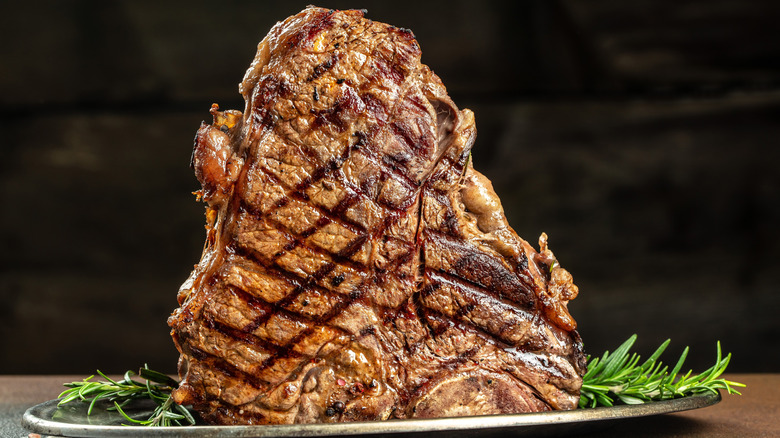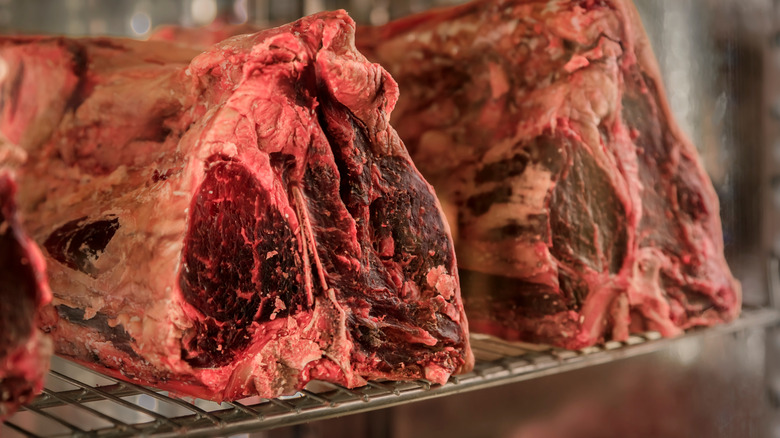The Bougie Italian Steak That Falls Between A T-Bone And A Porterhouse
Pasta may be the first thing that comes to mind when you think of traveling to Italy for the food. But, if your trip includes Tuscany, the region in central Italy famous for its verdant hills, vast wineries, olive trees, and stone farmhouses, then you will definitely need to make room for bistecca alla Fiorentina, also known as Florentine or Tuscan steak. What makes this steak so unique is the way it is prepared, the breed of cattle from which it comes from, and the distinct cut that makes it fall somewhere between a T-bone and a porterhouse.
Florentine-style beef comes from the oldest and most important breed of cattle in Italy, Chianina, which produces lean, tender and juicy cuts of beef. The cut is dry-aged and has a larger tenderloin, or filet, than that of a traditional T-bone. It is similar to a porterhouse, often considered one of the most desirable cuts of steak. The porterhouse includes both the strip and the tenderloin and is cut closer to the center of the cow, with the T-bone intact. The center of the cow is the least muscular and, as a result, the most tender part of the cow.
The preparation is key
The key difference between a porterhouse and a Tuscan steak is the latter's thickness. When you ask for a steak at a butcher shop in Tuscany, you order it by the "finger" thickness. A Tuscan steak should be three to four fingers thick.
What also makes bistecca alla Fiorentina is its preparation. It is almost always served rare after being grilled over an open fire for no more than five minutes per side. This gives it a crisp char on the outside while remaining red and juicy inside. The grilled meat is seasoned using just coarse sea salt, fresh herbs such as sage or rosemary, and a drizzle of Tuscan olive oil (of course!).
The only other thing you need is a fruity, full-bodied Tuscan wine to hold up to the steak. Chianti Classico, one of the predominant wines found in the region, may just fit the bill.

